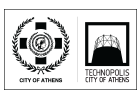
The Art & Science of Origami & Robotics
Nature folds and unfolds at all scales. From nanoscale DNA and protein folding to insect wings, seeds and leaves, all the way up to geological formations of mountains and valleys and then up to the universal scale via theories of dark matter. Origami, the art of folding paper, is an incredibly versatile method built on art, traditional craft, geometry, mathematics and, in recent years, complex advances due to the development of computational origami. Folding is a fundamental method for programming the shape of materials. Our research into Origami and Robotics takes the study of folding in nature and explores new areas of art and science. We introduce the Ars Electronica Futurelab as laboratory and atelier for future systems, followed by our Origami Robotic methods, theory, and results in oribotic (origami + robotic) sculpture, educational kits and musical instruments.
Participants:
Matthew Gardiner:Artist and Researcher on the Art & Science of Origami & Technology, Ars Electronica Futurelab
Dr Matthew Gardiner is a leading researcher on the Art & Science of Origami & Technology. Since 2010, Gardiner’s genre-defining research has been situated within the Ars Electronica Futurelab. His research interrogates all folded media, natural, artificial and technological, to uncover artistic and scientific potential. Oribotics was coined in 2003 to frame ongoing research into the frontier art science field of origami and robotics, and is embodied through a series of artworks. Oribokit® (2020) is a robotic origami kit, created to encourage experimentation and expansion of oribotic research, by bridging the gap between art and science through artistic practice and process.
With the kind support of the Austrian Embassy in Athens





